 An old program is gaining steam these days. Throughout the country, areas are embracing the Foreign Trade Zone program as a savvy tool in their arsenal to attract new business and help existing businesses stay more competitive.
An old program is gaining steam these days. Throughout the country, areas are embracing the Foreign Trade Zone program as a savvy tool in their arsenal to attract new business and help existing businesses stay more competitive.
FTZ for short, the program was created by the government in the 1930s to make U.S. manufacturing more competitive globally. From a customs perspective, a foreign trade zone treats areas such as warehouses and manufacturing facilities as if they were outside the United States. Participating companies save millions of dollars by deferring, reducing or totally eliminating duty payments on imports and exports. FTZs used to be seen more commonly in the areas around seaports and airports, but today, inland areas are also taking advantage of this program.
“Basically, it allows companies to defer duty payments, or in some cases, avoid them altogether,” said Charlie Williams, deputy director of the Nashville’s Office of Economic and Community Development, which administers Nashville’s zone.
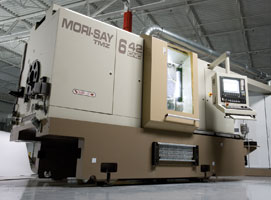 More than 2,800 companies take advantage of foreign-trade zones and move more than $410 billion worth of merchandise annually. The program is administered by the U. S. Foreign Trade Zones Board, which is composed of representatives from the U.S. Departments of Commerce and Treasury. According the Board, there are currently more than 275 general-purpose zones and 450 subzones. All 50 states plus Puerto Rico have established FTZs.
More than 2,800 companies take advantage of foreign-trade zones and move more than $410 billion worth of merchandise annually. The program is administered by the U. S. Foreign Trade Zones Board, which is composed of representatives from the U.S. Departments of Commerce and Treasury. According the Board, there are currently more than 275 general-purpose zones and 450 subzones. All 50 states plus Puerto Rico have established FTZs.
The Foreign Trade Zone Program, in a nutshell
The FTZ program encourages domestic business by removing certain disincentives associated with manufacturing in the United States. Without the FTZ program, a U.S.-based company can find itself at a disadvantage to foreign competitors when it has to pay higher rates on parts, materials or components imported for use in the manufacturing process due to imposed duties and tariffs, which are forms of taxes. The FTZ corrects this imbalance by treating products that are manufactured or assembled in a U.S. foreign-trade zone containing imported components as if they were produced domestically. This helps to offset tax advantages available to overseas producers.
Imported goods can be stored or assembled duty-free in an FTZ. Parts and raw materials can be converted to finished products, which are often subject to lower tariffs when they leave the zone and enter the market.
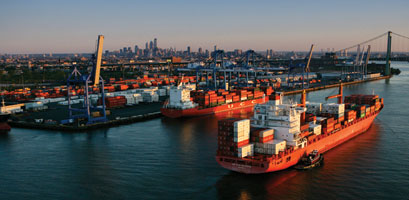 There are two types of foreign trade zones: general-purpose zones (GPZs) and subzones. General-purpose zones are usually located at ports, airports or industrial parks in public facilities. Although manufacturing is permitted within general-purpose zones, the most common activity use is for warehouse and distribution activity. They are typically used by small and medium-sized businesses.
There are two types of foreign trade zones: general-purpose zones (GPZs) and subzones. General-purpose zones are usually located at ports, airports or industrial parks in public facilities. Although manufacturing is permitted within general-purpose zones, the most common activity use is for warehouse and distribution activity. They are typically used by small and medium-sized businesses.
Subzones are special-purpose zones sponsored by general purpose zones, usually at manufacturing plants or large distribution operations. They usually involve a single company’s site which is used for more extensive manufacturing or assembly. A subzone is granted when the existing general purpose zone isn’t appropriate for a company’s activities.
According to Brent Case, director of foreign trade zone and international market development at Port Lansing, Michigan, only a small percentage of manufacturing and distribution companies benefit from an FTZ – specifically those who import at least $2 to $3 million in goods from places other than Canada and Mexico, which don’t require tariffs because of the North American Free Trade Agreement. Ideal candidates for the FTZ program import $10 million or more, since the savings on tariffs usually can offset upfront investment and activation costs, along with added administration expenses that accompany the FTZ program.
How it benefits companies and communities
FTZ’s benefits to a company are obvious. It helps facilitate and expedite international trade, which increases cash flow. It lowers inventory costs by allowing participating companies to import and store goods duty-free for an indefinite period, as well as destroy or re-export defective goods and waste materials without paying duties. It also encourages exports. Merchandise that is shipped to foreign countries from FTZs is exempt from duty payments. This provision is especially useful to firms that import components in order to manufacture finished products for export.
ZPS America, a CNC and CAM machine tool company that is headquartered in Indianapolis, is one that takes advantage of a foreign trade zone. Olaf Tessarzyk, managing partner and president, said: “For international companies that have many capital equipment costs and import a lot of machinery, it’s important to have access to a FTZ. It gives you an advantage over your competition if you are much quicker.”
Communities benefit as well.
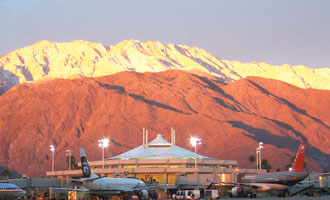 FTZs stimulate economic growth and development because existing companies in the area retain jobs, and new and growing companies add them. The FTZ program impacts indirect employment, as well, because a business not only creates direct jobs, but also creates opportunities for suppliers and service providers in the community.
FTZs stimulate economic growth and development because existing companies in the area retain jobs, and new and growing companies add them. The FTZ program impacts indirect employment, as well, because a business not only creates direct jobs, but also creates opportunities for suppliers and service providers in the community.
An FTZ project can be a valuable asset when a community is trying to attract new business investment to its area. This growth ultimately translates into an expanded tax base and improved infrastructure.
“The FTZ program is an essential economic tool for communities and business leaders,” said
Cathy Van Horn, economic development administrator in Palm Springs, California.
Scott Neal, a licensed customs broker and international trade consultant in Palm Springs, agrees, “It stimulates the economy and promotes international trade.”
Existing FTZs: helping businesses – big and small – stay more competitive
Some areas are natural Foreign Trade Zone sites. Philadelphia, right on the Delaware River in the population-dense East Coast is one. Indianapolis, in the crossroads of the Midwest and bolstered by the FedEx hub at the Indianapolis International Airport, is another.
Indianapolis
The Greater Indianapolis FTZ #72, also known as INzone, was established in 1981 and is administered by the Indianapolis Airport Authority. In addition to FedEx, the U.S. Postal Service Eagle Network Hub is located there. Because of that and the area’s centralized location, millions of dollars of commodities travel through the area each year, ranging from machine and automotive parts to medical, pharmaceutical and retail goods.
Currently, Indianapolis has 19 designated subzones and eight operators in the GPZ, including Eli Lilly and Company, Hellmann Worldwide Logistics, Subaru of Indiana Automotive Inc. and D.B. Schenker among others, along with the recently approved subzone status for Brightpoint North America. At the end of 2009, INzone said that area FTZ companies employed 3,323 central Indiana employees and had nearly $720 million worth of inventory flow through their businesses.
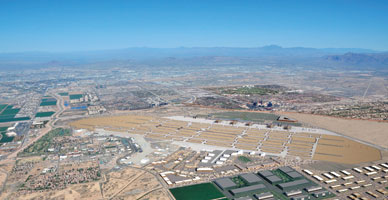 According to Kent Ebbing, general manager of INzone, The Greater Indianapolis Foreign Trade Zone was formed to assist companies in central Indiana gain access to federal program benefits that ultimately support job retention and growth.
According to Kent Ebbing, general manager of INzone, The Greater Indianapolis Foreign Trade Zone was formed to assist companies in central Indiana gain access to federal program benefits that ultimately support job retention and growth.
“For some businesses, the FTZ designation it is a critical necessity and our support has assisted them in their decision to locate or expand in Indiana,” Ebbing said. “Being designated as a FTZ allows our business partners to capitalize on a number of benefits, primarily saving time and money. We can help them become more efficient and cost-competitive in the global marketplace.”
When deciding where to locate his company, ZPS America, Olaf Tessarzyk said that the determining factor was access to a foreign trade zone. He’s found that his company, which imports goods from Europe, receives a big cost savings when it does the custom clearings themselves. Plus, the time savings enables the company to better meet the needs of its customers.
“Sometimes the items we need can be shipped to us in 24 hours, but without the FTZ, they can get held up in customs for two- to-three days, especially if it’s over a weekend. If we can do the customs clearings ourselves, it’s much faster – and send them en route the same day. Plus, we don’t have to pay duties until we sell the items, which helps our cash flow,” he said.
Philadelphia
Another entrenched FTZ is Philadelphia, FTZ #35, which was created in 1979. It has four designed subzones used by Merck, Sun Company, ConocoPhillips and the Aker Philadelphia Shipyard. The Port of Philadelphia, which is part of the FTZ general-purpose zone, ranked as the 23rd busiest U.S. port by container volume in 2007, according to the U.S. Army Corps of Engineers.
David Harvey, who is in charge of the Foreign Trade Zone for the Philadelphia Regional Port Authority, said: “The FTZ helps attract companies to the region that would look elsewhere if we did not have FTZ status. It’s another tool we can use to help a company be successful. It really benefits the Philadelphia area by its ability to create jobs and lower the cost of shipping and storage for these companies. It gives them more cash, which in turn allows them to hire local people from the region.”
Newer FTZs: a smart way to attract new business
Because of the success seen by areas like Indianapolis and Philadelphia, other areas have followed suit. Interest in the Foreign Trade Zone program has skyrocketed in recent years, as evidenced by the designation number (the number after the FTZ location) jumping from the double digits to nearly 300 in only a few decades. While Philadelphia #35 was created in 1979, jump forward to 2009 and Port Lansing (Michigan) received #275.
Palm Springs, California
More than a decade ago, the economic development team in Palm Springs noticed that the U.S. was strengthening its trade with Asia. They correctly predicted that the result would be increased demand for imports and exports in southern California and that pressure on the busy Ports of Long Beach and Los Angeles would drive this traffic eastward to Palm Springs. In 2002, Palm Springs received FTZ designation #236.
“It was a natural position for the City of Palm Springs to accommodate the international trade, manufacturing and distribution,” said David Harlow, president of ITC Diligence and FTZ consultant to Palm Springs. “It wasn’t if the trade was going to come but when. The FTZ was one way for Palm Springs to attract more jobs, improve economic development and improve the economy.”
Lansing, Michigan
Like Palm Springs, Lansing is using its size and location to its advantage. An inland port, Port Lansing is working to lure imports away from congested ports in Detroit and Chicago.
“Since we’re a new port and FTZ, we have much shorter lead and wait times,” said Brent Case at Port Lansing. “Plus, in places like Chicago, there are hundreds of Customs and Border Protection officers who won’t know your company from the thousands of others shipping there. Here, businesses can have a relationship with their customs officer, which can help resolve any issues quickly.”
Mesa, Arizona
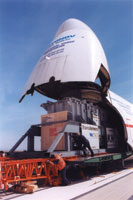 Bundling FTZs with other incentives make an even more powerful tool to attract new business.
Bundling FTZs with other incentives make an even more powerful tool to attract new business.
Arizona has enacted special legislation that makes businesses located in a zone or sub-zone eligible for up to an 80 percent reduction in state real and personal property taxes – and is the only state to do so. The reduction lasts for the entire time the company operates in the zone or sub-zone.
According to William Jabjiniak, who heads up Mesa’s Office of Economic Development, “It would produce an effective tax rate on real and personal property in Arizona that would be significantly lower than virtually any other jurisdiction in the United States.”
Mesa’s FTZ #221 got its start at the Phoenix-Mesa Gateway Airport, when it was being decommissioned as an air force base because of a BRAC realignment. Today, the zone has expanded to include 600 acres of private land adjacent the airport, which is currently being developed to attract business. Mesa is spending more than $40 million in infrastructure improvements, including roadways, water lines, power and sewers, to handle this growth.
“With Homeland Security and U.S. Customs there on site, the area in and around Phoenix-Mesa Gateway Airport is a great setup,” said Scot Rigby, also with Mesa’s Office of Economic Development. “Everyone is looking for an edge and that’s where the FTZ comes in.”
Giving the U.S. economy the competitive edge
The Foreign Trade Zone program has grown rapidly in recent years because it meets the needs of both communities and businesses.
“FTZ isn’t a hard program but it’s flexible and forms around a company’s needs in regards to manufacturing, assembly and distribution. It definitely helps U.S. manufacturing and final stage manufacturing industries,” said David Harlow, Palm Springs FTZ consultant.
Scott Neal, the customs broker in Palm Springs, summed it up. “The program is one of the best-kept secrets. It will contribute to an overall improved and vibrant economy, the retention of vital U.S. business sectors and jobs, the creation of important new American jobs, increased international trade activity and a leveling of the playing field in the global marketplace which will ultimately help U.S. companies compete abroad.”

